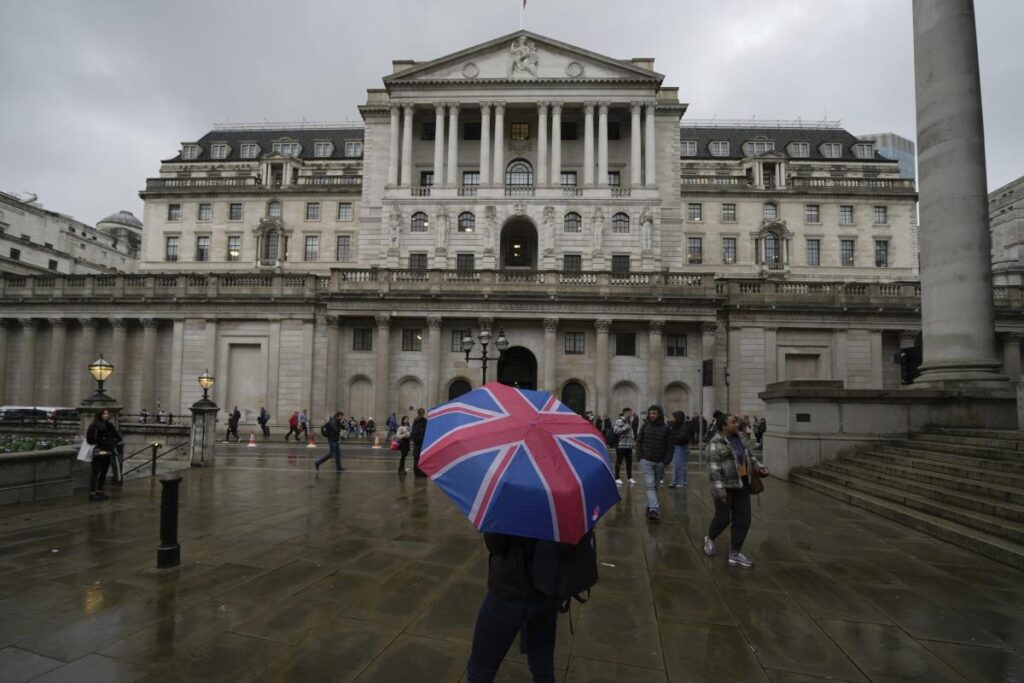The Bank of England is poised to implement its second interest rate cut in three months, responding to a significant drop in inflation. Currently, inflation in the U.K. has reached its lowest point in over three years, prompting a widespread expectation that the central bank will lower its main interest rate by a quarter of a percentage point to 4.75%. This decision follows a previously significant cut in August, which marked the first reduction of borrowing costs since the early days of the coronavirus pandemic in early 2020. This cut came as a necessity when inflation began to escalate due to a host of factors, including supply chain disruptions and soaring energy prices driven by geopolitical tensions, notably Russia’s military actions in Ukraine.
Numerous central banks around the world had previously raised borrowing costs from their near-zero levels during the pandemic to combat inflation. Recently, as inflation rates have begun to decline from their peak levels, these institutions have started to reconsider their strategies. In the United Kingdom, the drop in inflation to 1.7% for the year ending in September—below the Bank of England’s target of 2%—has led policymakers to feel more assured about easing financial constraints on consumers and businesses. This is particularly crucial as many are still grappling with the economic repercussions of past lockdowns and ongoing cost-of-living challenges.
The timing of this rate cut is particularly significant, as it follows the U.K. government’s substantial fiscal commitment announced by Treasury chief Rachel Reeves. A budget plan involving around £70 billion ($90 billion) of additional spending, funded through increased taxes and borrowing, has raised concerns among economists. There’s a risk that these tax increases could lead businesses to transfer the financial burden onto consumers, potentially reigniting inflationary pressures in the economy next year. Economist James Smith from ING highlighted that while the budget may not impede the decision to cut rates, it raises questions about the pace and frequency of further cuts, suggesting a more cautious optimism moving forward.
Adding complexity to the economic landscape is the recent election of U.S. President-elect Donald Trump, whose policies may have global repercussions. Trump has signaled intentions to cut taxes and impose tariffs on specific imports upon his return to office. Such fiscal policies are widely believed to have inflationary effects that could extend beyond the U.S., prompting the Bank of England to potentially maintain higher interest rates than originally anticipated. The interconnectedness of global economies means that shifts in U.S. policies will undoubtedly play a substantial role in shaping the economic environment in the U.K. and elsewhere.
The U.S. Federal Reserve is also preparing for its interest rate decision, with expectations of a quarter-point cut that echoes the anticipated actions of the Bank of England. Both central banks are navigating their respective economic challenges in light of declining inflation rates but remain wary of developing situations, particularly due to shifts in economic policy linked to the recent U.S. election. The predictive capacity of these central banks hinges on the balance between fostering economic growth through lower borrowing costs and addressing the potential risks of renewed inflation stemming from fiscal decisions.
Ultimately, the Bank of England’s decision to cut interest rates reflects a cautious approach to managing inflation while providing relief to consumers and businesses facing economic stress. The dual pressures of increased government spending and external economic influences from the U.S. add layers of complexity to this decision-making process. Moving ahead, Bank of England policymakers will need to remain vigilant in monitoring the evolving economic landscape, as subsequent rate cuts may be necessary but must also consider potential inflationary repercussions stemming from both domestic and international developments.

